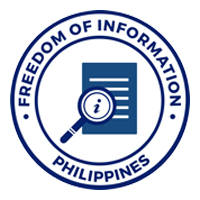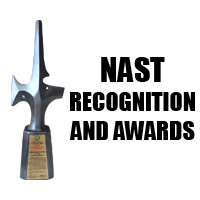Luzon-Regional Scientific Meeting: Attaining Sustainable Development Goals: Philippine Fisheries and Other Aquatic Resources 20/20
- Details
The National Academy of Science and Technology, Philippines (NAST PHL) will conduct its 39th Annual Scientific Meeting (ASM) on July 12 – 13, 2017 with the theme “Attaining Sustainable Development Goals: Philippine Fisheries and Other Aquatic Resources 20/20”.
For this year, NAST PHL adopted the Sustainable Development Goals (SGDs) to be its overarching theme. The Agricultural Sciences Division, being the host division, agreed to focus on “fisheries” where science is critical. They are also interested in determining how these sectors will impact the achievement of SGDs in the Philippines.
This annual activity of the Academy aims to convene a conference to determine how the Philippines will achieve the Sustainable Development Goals. It serves as the leading forum for the presentation of the results of scientific and policy research.
In line with the thrust of the Duterte administration, NAST PHL will conduct Regional Scientific Meetings in Luzon, Visayas, and Mindanao. For Luzon, NAST PHL will hold the two-day Regional Scientific Meeting in Baguuio City on 15 – 16 May 2017. This is in coordination with the Department of Science and Technology Luzon Cluster (Regions I, II, III, IV-A, IV-B, V, CAR, and NCR).
Visayas-Regional Scientific Meeting: Attaining Sustainable Development Goals: Philippine Fisheries and Other Aquatic Resources 20/20
- Details
In line with the thrust of the Duterte administration, NAST PHL will conduct Regional Scientific Meetings in Luzon, Visayas and Mindanao. For Visayas, NAST PHL has held the two-day Regional Scientific Meeting (RSM) in Cebu City on April 18-19, 2017. This was in coordination with the Department of Science and Technology (DOST) Visayas Cluster (Region VI, VII, VIII, NIR).
Secretary Fortunato de la Peña of the DOST gave the opening message, followed by NAST Acting President Academician (Acd.) Fabian M. Dayrit who delivered the message from NAST and the objectives of the RSM. Congressman Erico Artistotle C. Aumentado, Chairperson of the Committee of Science and Technology of the Congress and Representative of Bohol 2nd District was the keynote speaker.
Acd. Rhodora V. Azanza focused on the past, present and what is next in seaweeds culture. She delivered a brief background on culturing seaweeds all over the worlds and also some data on the major producing regions of seaweeds in the Philippines. Dr. Maximo A. Ricohermoso also continued in discussing about seaweed culture and how it has been the livelihood source of Philippines fisherfolk today.
Dr. Mudjekeewis D. Santos (OYS) 2011 and Dr. Danilo B. Largo (OYS) 1999, discussed an analysis of Fishery Harvest and Mariculture. Dr. Santos presented on protected spawning areas and impact of land reclamation of Fisheries while Dr. Largo presented on Integrated Mariculture; development of Integrated Multi-trophic Aquaculture (IMTA) for tropical species in Southern Cebu, Philippines.
Academician Leonardo Q. Liongson, 68
- Details
Academician (Acd.) Leonardo Q. Liongson, a renowned Filipino expert in the field of hydrology, hydraulics and water resources engineering and management, flood control, lahar flow control and disaster mitigation joined his creator on April 5, 2017 at the age of 68.
The National Academy of Science and Technology, Philippines (NAST, PHL), the country’s highest recognition and advisory body on issues concerning science and technology, joins the scientific community in mourning the demise of Acd. Liongson.
He has done most of his work in National Hydraulic Research Center (NHRC) projects for infrastructure development or for engineering operations. A very passionate man, his works made an impact not only on the local science and technology community but had made substantial benefits on Philippine society.
Acd. Liongson has done scholarly work in mathematics and computer modelling of fluid flow,written software for water resources management, built a database of groundwater resources for Metro Manila and the Laguna Lake basin, and studied historical aspects of Manila’s drainage system and the country’s physical infrastructure.











